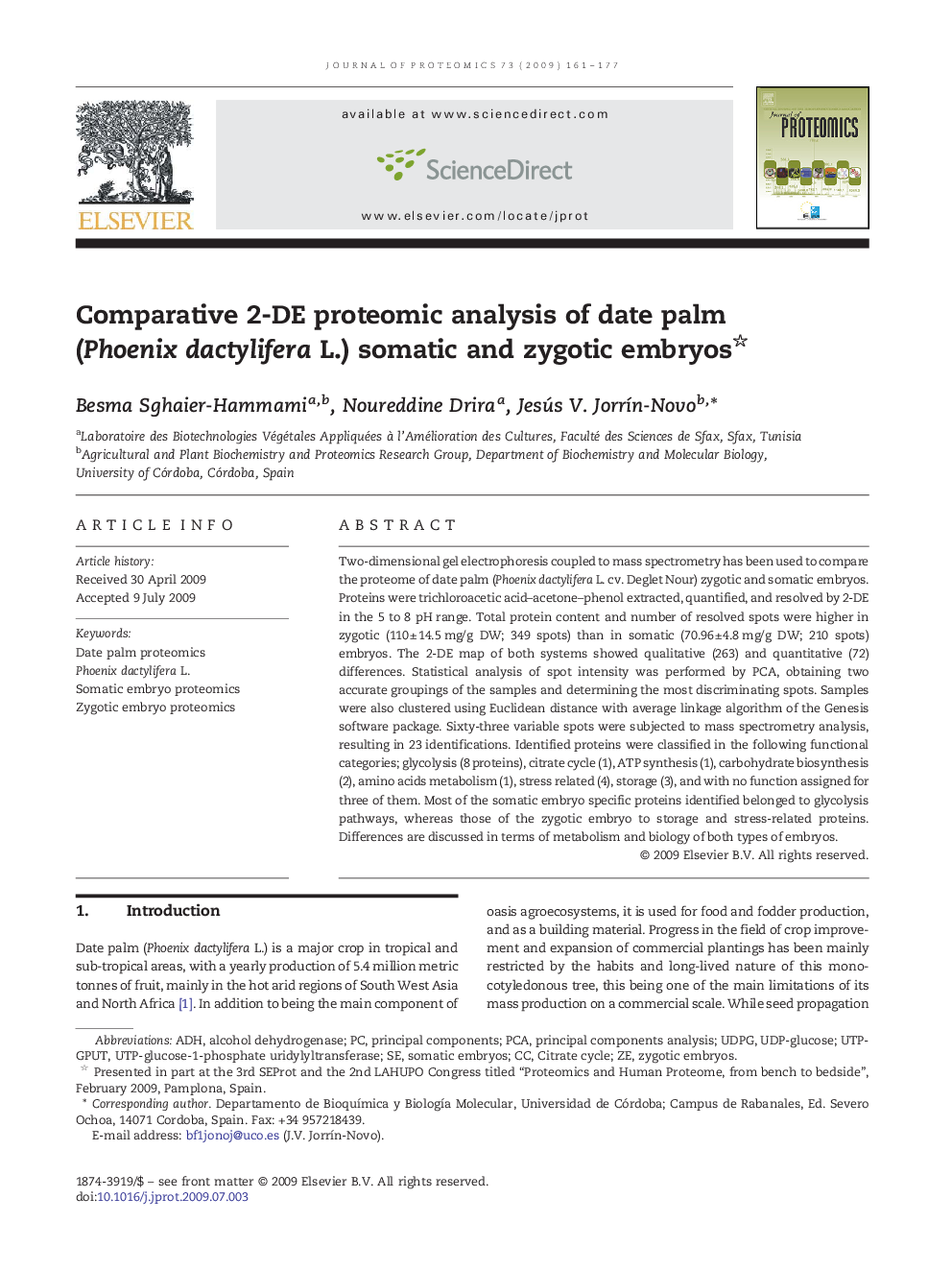| Article ID | Journal | Published Year | Pages | File Type |
|---|---|---|---|---|
| 1226792 | Journal of Proteomics | 2009 | 17 Pages |
Two-dimensional gel electrophoresis coupled to mass spectrometry has been used to compare the proteome of date palm (Phoenix dactylifera L. cv. Deglet Nour) zygotic and somatic embryos. Proteins were trichloroacetic acid–acetone–phenol extracted, quantified, and resolved by 2-DE in the 5 to 8 pH range. Total protein content and number of resolved spots were higher in zygotic (110 ± 14.5 mg/g DW; 349 spots) than in somatic (70.96 ± 4.8 mg/g DW; 210 spots) embryos. The 2-DE map of both systems showed qualitative (263) and quantitative (72) differences. Statistical analysis of spot intensity was performed by PCA, obtaining two accurate groupings of the samples and determining the most discriminating spots. Samples were also clustered using Euclidean distance with average linkage algorithm of the Genesis software package. Sixty-three variable spots were subjected to mass spectrometry analysis, resulting in 23 identifications. Identified proteins were classified in the following functional categories; glycolysis (8 proteins), citrate cycle (1), ATP synthesis (1), carbohydrate biosynthesis (2), amino acids metabolism (1), stress related (4), storage (3), and with no function assigned for three of them. Most of the somatic embryo specific proteins identified belonged to glycolysis pathways, whereas those of the zygotic embryo to storage and stress-related proteins. Differences are discussed in terms of metabolism and biology of both types of embryos.
